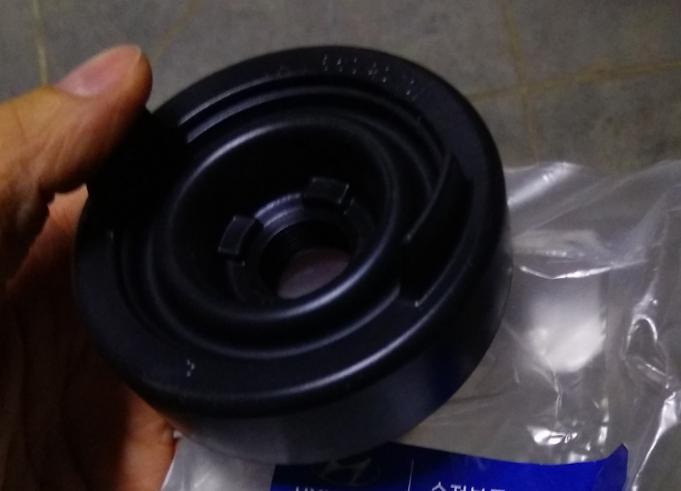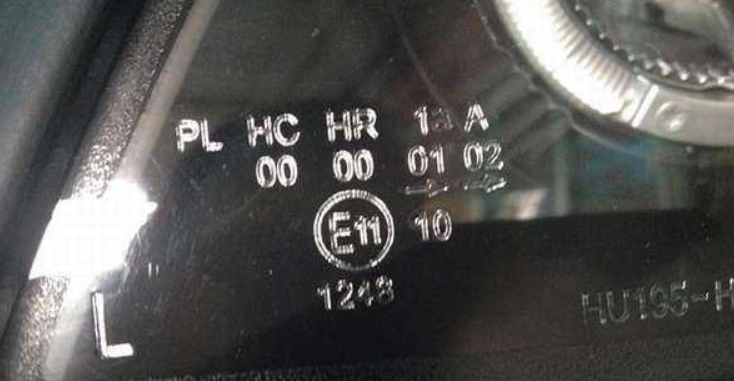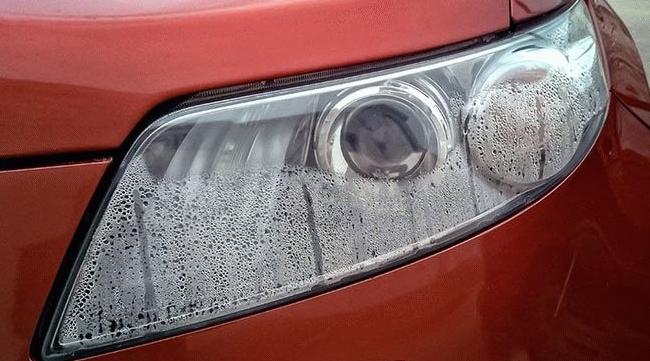What to do when the headlights on your car are sweating
Many drivers do not know why a car headlight fogs up from the inside and drive with this problem for years. This not only impairs visibility, but also leads to accelerated wear of the elements - oxidation of contacts, deterioration of the reflector and contamination of the glass from the inside. It is worth to deal with condensation as early as possible, for this purpose the cause is identified and the fault is eliminated.
Why headlights are misting up from the inside
There may be several options, it all depends on the design features of the headlights, the mileage of the car and other factors. It is easiest to deal with the main causes to understand what to pay attention to during the inspection. The way to fix it depends on the nature of the problem, most often the repair does not take much time and is cheap.
Loose connection
One of the most common causes, especially in older headlights, where the plastic has lost its elasticity over time, and the seals have become loose and rigid. In this case, there can be different options, most often such as:
- The rear plugs are loose.Through which the lamps are changed. You need to remove them and inspect the seal, usually over time it is pressed through and not pressed tightly enough to the body. To solve the problem, you can apply a small layer of sealant around the perimeter and let it dry. The result will be an elastic perimeter seal that will fill in all the gaps and prevent moisture from getting in. If the layer is too thick, you can carefully cut it off with a construction knife.If the rubber plug has lost its elasticity, it is better to replace it.
- Damaged or broken retainers. Another common problem in older cars. Over time, the elements that hold the caps are broken or cracked, making it impossible to hold them properly. In this case, repairs can range from soldering or gluing individual parts to installing homemade retainers or using strong tape to keep them from opening due to vibration.
- The seal is broken at the place where the glass is glued to the headlight housing. This can be detected after removing the part. If the sealant is damaged in several places, it is better to remove the glass and glue it again. If there are small damages, they should be carefully glued with sealant If the damage is minor, they should be carefully sealed with sealant of a suitable color and allowed to dry before installing the headlamp on the car.
To remove the glass with the old sealant, it is best to heat it with a construction hair dryer, then it comes off much easier.
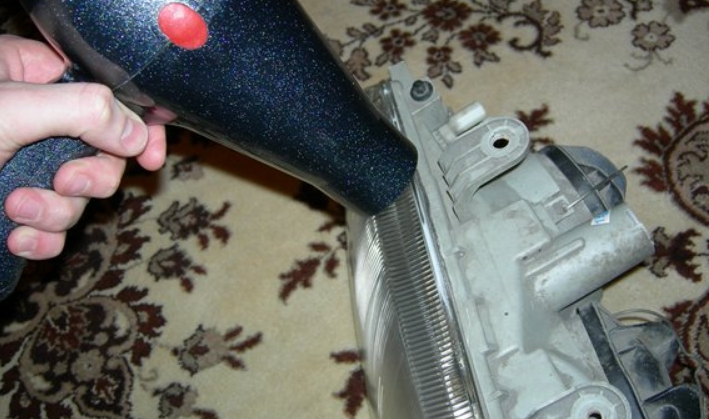
Moisture ingress through the check valve
Since the bulbs in the headlights get hot during operation, the air expands and needs to be vented. Most modern machines use a check valve for this, which lets warm air out, but does not let cold air in. The fault can be both in the valve itself and in the connections, it is worth inspecting them for cracks. Another possibility is. Damage or cracking of the tubeThe valve is not present in some headlamps, but there are special vent holes in the housing.
Some headlamps do not have a valve, but special ventilation holes on the body. Over time, they become clogged with dust and dirt and do not provide a normal air exchange, due to which condensation accumulates inside. This is especially common in winter due to the large temperature difference between the inside of the headlight and the outside. You can eliminate the problem by cleaning the holes, they should be checked regularly, at least once a year, especially if the car is often driven on dusty roads.
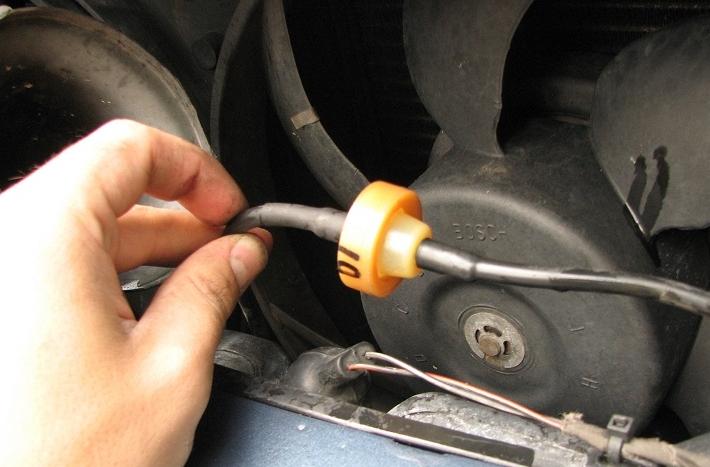
Violation of geometry during manufacturing
If headlamps mist up on cars that have been used recently, it is most often caused by violation of production technology. This can manifest itself in different ways: poor adhesion of glass to the body, design flaws, loose fitting plugs, leaky connections, etc.
In this case you should not make a headlight or taillight yourself. It is better to contact the seller to have the problem eliminated under warranty. Very often such malfunctions are found on non-original cheap spare parts. Therefore, do not save money, it is wiser to buy quality products, so you do not have to remove the headlights and return them.
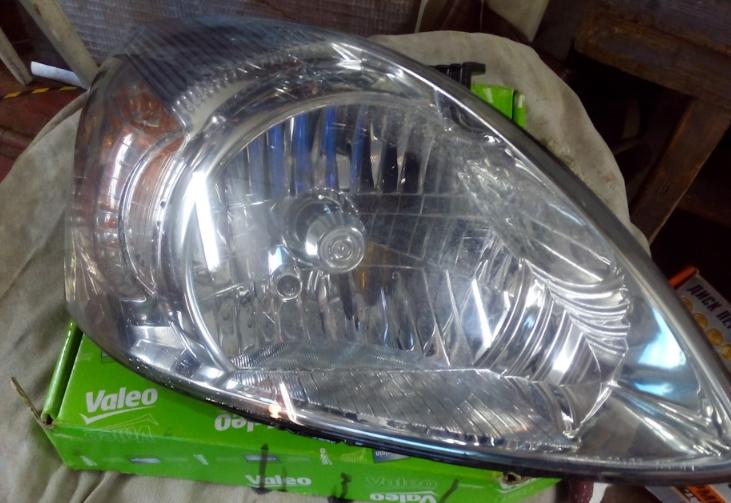
The easiest thing to do is to read reviews about different brands from drivers. There you can find out the typical problems and choose the option that causes the least complaints.
Leaking due to cracked and damaged glass
Headlight or lamp glass can be damaged by flying pebbles while driving. Moreover, while large cracks can be detected, small cracks or those located at the bottom of the diffuser are invisible. Sometimes a thorough check is required to find the damage. In this case, fogging is often observed after precipitation or car washing. The easiest way to solve the problem is as follows:
- The area of damage is cleaned of dust and dirt. It is better to use a degreaser that does not damage the plastic. If there are splinters, they should be carefully removed, the headlight should be removed, put on a table or workbench and ensure comfortable work and good lighting.
- Use a special adhesive for the job. There are on sale transparent compositions that are invisible on the glass and do not distort the light flux after drying. They differ in packaging volume and degree of density. For thin cracks, liquid ones will do, for larger cracks - thick ones.
- The composition is applied strictly according to the instructions, do not violate the manufacturer's recommendations. After the work is done, it takes from an hour to a day to dry, it all depends on the type of glue. When gluing, take care not to let the glue drip in, it can ruin the reflector and the lens.
- After drying you may need to polishing the headlampto remove any excess glue. This will also help restore clarity to the surface and improve light.
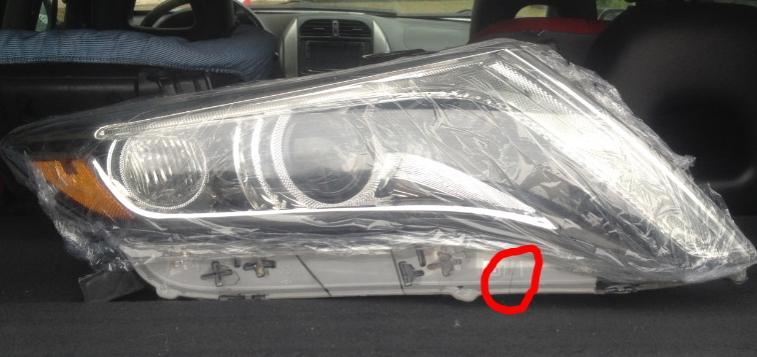
Should Headlights in a New Car Sweat
It's not uncommon for a new car to have sweaty headlights from the inside. In many models, it is considered the norm and is written in the manual.It is worth looking for information there in the first place. Most often, the period of disappearance of excess moisture is from a week to a month. Besides, if the condensation disappears 5-10 minutes after you turn on the dipped beam, it is not considered as a malfunction.
If the headlights continue to sweat for several months, it is worth contacting the dealer for replacement, as the design is clearly broken. Most often with new headlights such problems occur in frosty weather, but if the fogging did not go away in the spring, it indicates a malfunction.
This also applies to new headlights, if they are changed. When buying, you need to clarify the issue with fogging in advance to understand in what cases it is worth contacting the store and what period is allowed for condensation inside.
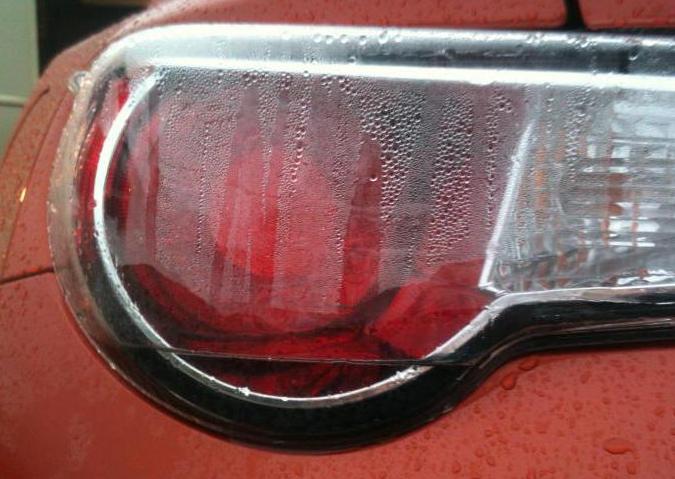
As for taillights, more often than not, moisture inside is an indicator of a problem that needs to be addressed immediately. Usually the seal is broken or water enters the housing through the trunk drains, quickly causing the lamp to fail.
If there is no information in the manual about headlight fogging, the dealer should replace or repair it. Without official confirmation that condensation is acceptable, it is grounds for fixing the problem under warranty.
What to do when a headlight is fogged
In some models, headlight fogging is a "disease" due to design flaws or poor build quality of the elements. If you do not solve the problem yourself, it will not disappear and will lead to accelerated wear and deterioration of parts inside the body. There are several ways to get rid of the problem:
- Place a bag of silica gel inside. It will absorb excess moisture and keep the headlights from fogging up. It should be placed away from bulbs to prevent its movement. This usually lasts for 3-6 months, after which you need to change the silica gel with fresh one.
- Make an additional ventilation hole in the lower part of the case. Often the standard breathers are not enough for normal air exchange. If this aggravated the problem, the hole is taped or covered with auto-plastic.
- Remove the plugs from the headlights And drive for a day with them open. Due to ventilation and heat flow from the engine compartment, the cavity will dry out. After that the plugs are put in place, you can immediately put silica gel for reliability.
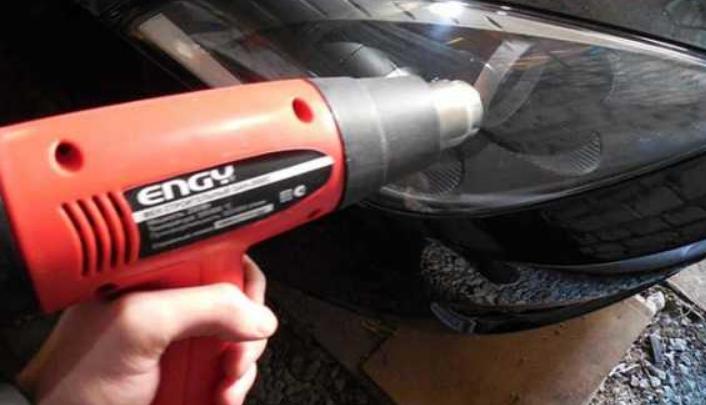
How to remove misting without removing a headlamp
If you need to quickly solve the problem, you can use one of the folk methods. You need to do the following:
- If you have a construction hair dryer, you need to dry the glass well from the outside by opening the rear plugs. Since it strongly warms the surface, you should not hold it very close. You also need to move it around the surface constantly, making sure it heats evenly.
- On the front lights you need to put a thick cloth, turn on the light for 5-10 minutes. It is not necessary to keep more than that, as this can cause the surfaces to overheat. After that, the moisture will disappear and you can drive on.
On the road you can use as an absorbent material salt in a cloth bag, it quickly removes moisture.
What to do if fog lights sweat in winter
LED bulbs get much cooler in the winter LED bulbs and xenon. When they are used, the temperature drop is small, so the risk of condensation is the smallest. But if a similar problem appeared in fog lights with diode light sources, it is worth checking the housing and glass.
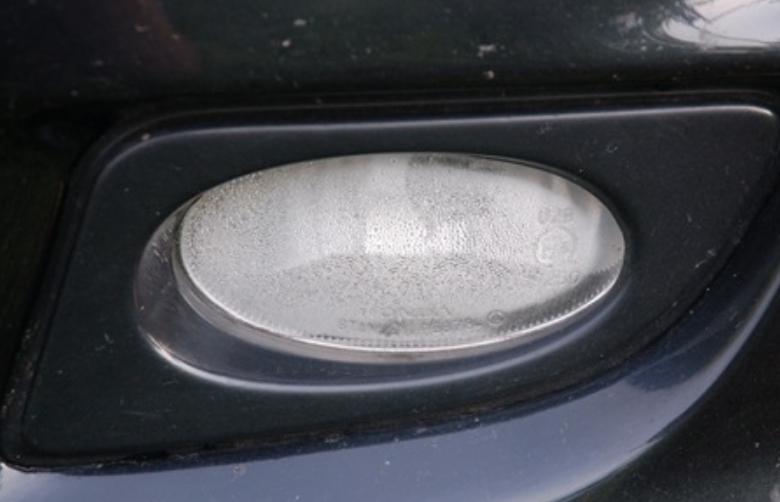
To begin with, the PTFs are removed and inspected for cracks, the integrity of the housing and the tight fit of all connections. If there are signs of damage, they should be repaired. For reliability, you can put a bag of silica gel inside to absorb the excess moisture.
For clarity, a video for fixing on popular models
Elimination on Renault Koleos.
Video instruction on the example of Lada Granta.
For Hyundai Solaris.
For Lada Kalina.
Volkswagen Polo 2020.
Headlight fogging is a malfunction that impairs visibility and shortens the life of the bulbs and other headlight components. Therefore, it is worth eliminating the problem in order to remove condensation inside and ensure normal operation of the lighting system.
